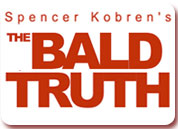Hair Transplant History
Source: premierehairdoc.com
1950’s: In the 1950s, doctors began to experiment with relocating balding resistant hair follicles from the back and sides of the head to the balding scalp. They were interested in determining if these follicles would live forever, as they would have if they had never been moved. The results were positive! The term for this phenomenon is Donor Dominance. It is the hair follicle itself that determines longevity, not where the hair follicle is located or relocated to on the scalp.
1960’s & 70’s: With this hair transplantation concept, physicians began to perform hair transplants for cosmetic improvement. And like most new developments, the first attempts were less than perfect. Doctors were successful in transplanting hair from the sides and back of the head to the top, but the results looked unnatural and obvious. These older and obsolete methods of hair transplantation practiced in the 1960’s and 1970’s nearly always resulted in a “clumped” or “bristle brush” appearance. The “Barbie Doll” appearance of hair transplant plugs (round grafts containing generally 15-25 or more hairs) is unfortunately nearly always quite conspicuous, and worse, permanent.
1980’s: Obviously these procedures required dramatic improvements. Over the course of years the technique of hair transplantation evolved. During the 1980s, minigrafts (smaller clumps containing 5-8 hairs) were an improvement, but only served to generate smaller “plugs”. Indeed, many hair restoration procedures involve the repair and/or hairline camouflage of these “plugs” or “minigrafts”. Even more unfortunately, some hair transplant doctors still utilize these larger grafts. As techniques have improved, the grafts have become smaller and the number transplanted per session has increased. Today most hair transplant surgeons use grafts that have from one to eight hairs, with 200 to 800 grafts transplanted in each session. Although this is a major improvement over the larger grafts, this procedure still can produce a slightly unnatural look.
Present: The next evolution in surgical hair restoration techniques is called follicle-unit micrografting, and it has revolutionized the approach to many forms of hair loss. With this method, many hundreds or thousands of tiny, living grafts containing only one, two, three or four hairs are inserted in closely spaced fashion over the entirety of the bald and thinning areas. These follicle-unit micrografts, which approximate the one to four hairs which naturally originate from each of your original follicles, result in a very natural, aesthetic appearance. Randomly-spaced single hair micrografts are used in the very front of the hairline to create an especially pleasing, feathered hairline.



